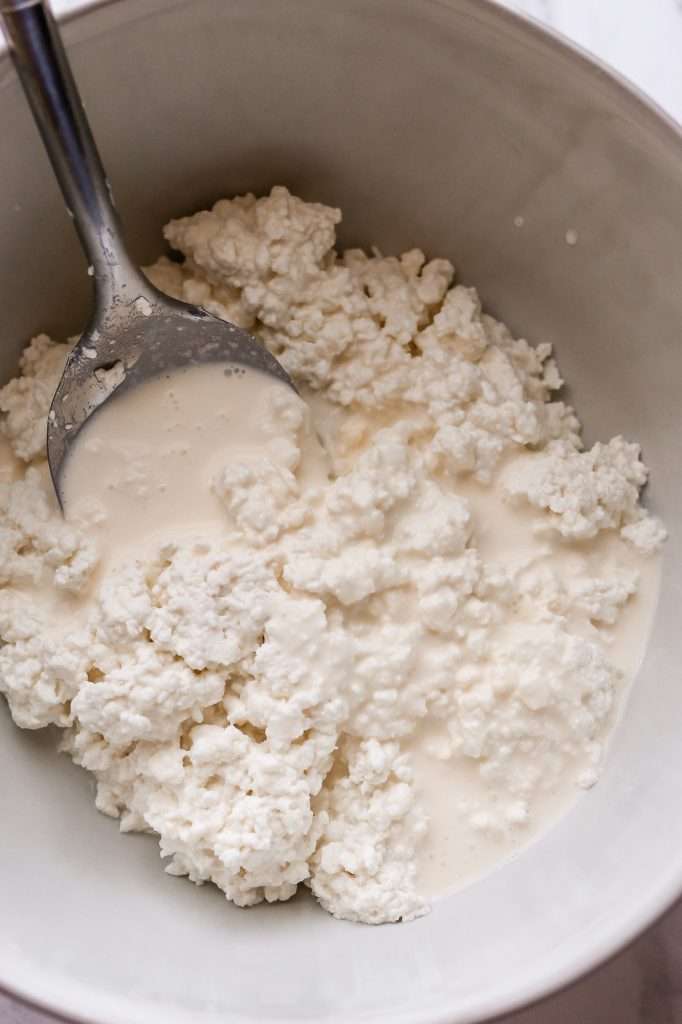- when using non-homogenized milk, scoop 1/2 cup of cream from the top of the milk and set aside.
- You will see a lot of gently stir directions in this recipe, that means stir slowly and avoid making bubbles.
- Heat one gallon of milk over low heat to 86° F (30° C).
- When the milk reaches 86° F (30° C) turn off the heat and sprinkle 1 packet of cheese cultures over the top of the milk, then gently stir the cultures into the milk for 1 minute.
- Place a lid on the pot then wrap the pot in a warm towel or blanket to maintain a warm temperature. Let the pot sit undisturbed for 3 hours.
- After 3 hours, dilute 1/2 teaspoon liquid rennet in 2 tablespoons of filtered water.
- Add the diluted rennet to the milk mixture and stir with a very gentle up and down motion for no more than 30 seconds.
- Place the lid back on the pot and then wrap the pot in a warm towel or blanket to maintain a warm temperature.
- Let the pot sit undisturbed for 1 hour.
- After 1 hour, check for a clean break: slice the curd once and pull it back a little with the knife. You should see whey fill the crack and your knife should be clean. If you do not have a clean break yet, let it sit for another hour or two then check again.
- Cut the curd using four sets of cuts: up and down, side to side and diagonally.
- Gently and slowly, stir the curds all the way through for five minutes, then rest for 20 minutes. Then repeat once more (stir gently for 5 minutes, rest for 20 minutes).
- Warm the curds to 115° F, gently over the lowest possible heat, stirring continuously but gently. Stirring keeps the curds separated and allows the curds to heat evenly. Be careful to only increase the temperature of the curd about 3° every 5 minutes. It may be necessary to turn the heat off then back on during the process.
- When the curds reach 115°F, hold the heat at 115°F for 10 minutes. Continue to stir the curd during this time to ensure even heating.
- The curds should be about the size of dried beans and should be slightly firm but somewhat soft.
- Strain the curds through a colander lined with clean butter muslin and allow the whey to drain off completely.
- In a clean container with an airtight lid, combine the curds with the salt and cream.
- Store in the refrigerator for up to 30 days.


